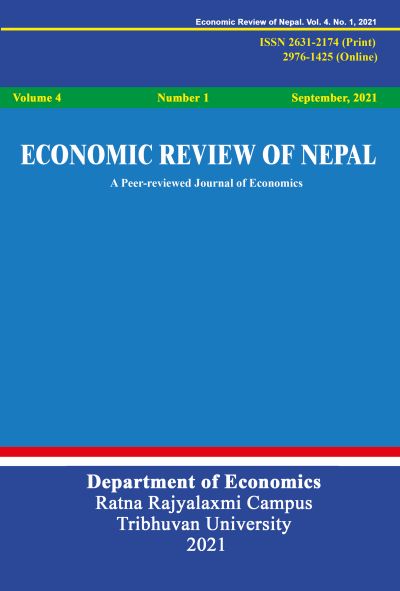Assessment of Different Irrigation Systems and Agricultural Productivity in Nawalparasi (West) District
DOI:
https://doi.org/10.3126/ern.v4i1.64123Keywords:
cropping pattern, cropping intensities, diversification, economy, employmentAbstract
Agriculture is the mainstay of people living in Nepal. The perception of agricultural yield has been broadly used to clarify the distributional organization and outline of agriculture. Irrigation is the practice of supplying water to the crops unnaturally to fulfill the water necessities. This study attempts to assess the different irrigation systems (surface irrigation, canal irrigation and ground water supply irrigation) practiced in Nawalparasi (west) district and their relation on agricultural productivity. Household survey with structural questionnaires, Key Informant Interview (KII)including field observation and marking on cadastral map has been used as primary sources of data and furthermore review of publications i.e., district profile, national agricultural census report, annual reports of district agriculture development office and research articles have been used as secondary sources of data. The result showed that the average productivity of different crops has affected by the reliability of sources of irrigation systems in all study sites. Further, diverse cropping patterns and cropping intensity were observed in different irrigation systems that ranging from 141 to 226.
Downloads
Downloads
Published
How to Cite
Issue
Section
License
Copyright (c) 2021 Department of Economics, Ratna Rajyalaxmi Campus

This work is licensed under a Creative Commons Attribution-NonCommercial 4.0 International License.
This license enables reusers to distribute, remix, adapt, and build upon the material in any medium or format for noncommercial purposes only, and only so long as attribution is given to the creator.




